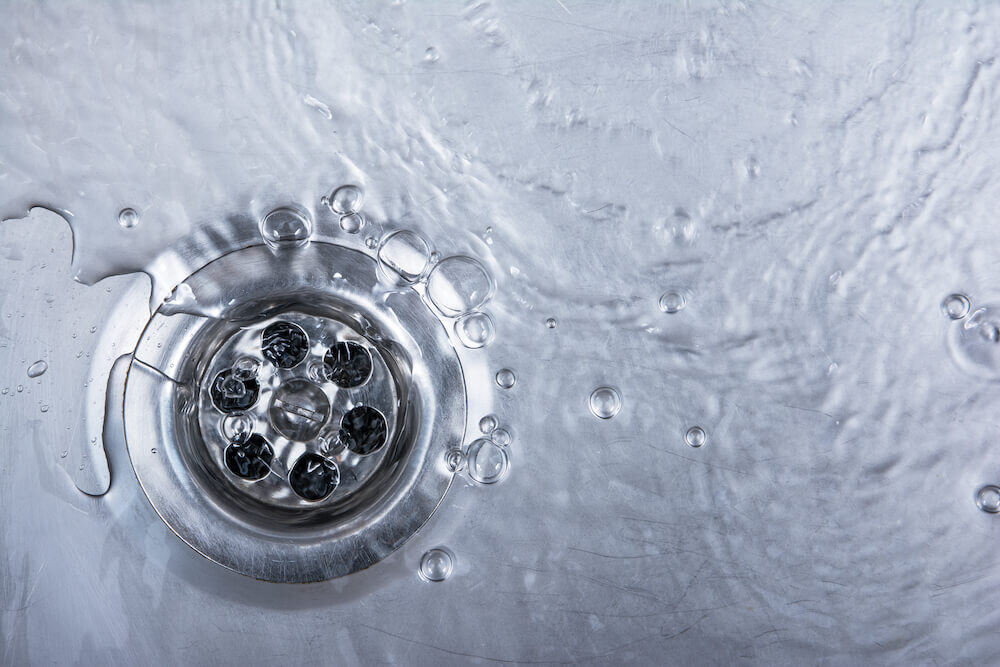 Discovering an overflowing toilet isn't exactly the way you want to start a day. Then again, it's no way to interrupt or end a day, either.
Discovering an overflowing toilet isn't exactly the way you want to start a day. Then again, it's no way to interrupt or end a day, either.
In the midst of a plumbing crisis, when emotions run higher than the water in your commode, it's easy to make a misstep in trying to regain control of the situation. So allow Experts in Your Home to lead you through the steps now, in a moment of calm, so that you'll know how to respond like a pro.
Step 1: Stop the Rush of Water
- Lay some old towels on the floor, especially if there is a lot of water there, so that you don't accidentally slip and fall.
- Remove the lid from the toilet tank and set it down.
- Reach inside the tank and press down on the flapper valve – a rubber piece located in the bottom-center region of the tank. This move will stop water from flowing into the bowl and, by extension, from flowing over the sides, too.
- Lift up on the float to stop the tank from filling. The water level in the bowl should start to drop. After about a minute, the water level should return to normal; now you can let go of the float and let the bowl refill without worrying about it overflowing. But keep an eye on it, just in case.
- If the water level doesn't start to drop after about a minute, keep holding onto the float while you shut off the water at the toilet supply valve. This is where things can get tricky, but not for long: the valve is usually located near the floor or on the wall behind the toilet. Turn it clockwise to close it. If you cannot hold onto the float and reach the valve at the same time, release the float and close the valve as quickly as you can.
Step 2: Investigate the Scope of the Plumbing Problem
- Test the other plumbing fixtures in the bathroom to see if they are working as they should.
- Check the other toilets in your home to see if they flush properly. A toilet can overflow for several reasons, including: a problematic septic field (if your home is on a septic system); a blocked trap, an S-shaped device located between the bowl and the drain line which is supposed to keep the drain from clogging in the first place; a clog in the pipes inside your home; a clog in the pipes leading outside your home, including the main sewer line, which can be disrupted by the root systems of trees; or a low-flow toilet, which generally means older models. Most often, toilets overflow because they are unable to process a foreign object (such as a children's toy) or an influx of material (such as tissue).
- Call Experts in Your Home for Chico plumbing help the minute you encounter anything troubling or suspicious. You're probably not a licensed plumber, but we have a crew of them waiting to help diagnose and fix any plumbing problem in your home.
- If only one toilet is affected, chances are that it is blocked. And you can attempt to unclog it yourself.
Step 3: Try to Unclog the Toilet and Clean Up
- Place the cup of a toilet plunger at the center of the hole in the toilet bowl. Exert slow pressure at first; then gradually increase the pace and pressure of your movements until the clog is dislodged and the toilet flushes freely.
- Clean up large amounts of water with a wet/dry vacuum. Old towels should suffice for smaller spills. Ensure that you dry out smaller spills. Ensure that you dry out any soaked areas – and disinfect them with bleach – so that you don't develop a mold problem.
Call Experts in Your Home if you need plumbing help in the Chico, CA area at any point along the way. We know: an overflowing toilet can be disruptive, confusing and chaotic (and not necessarily in this order). Sometimes, you need an expert at your side – and the Experts want to be there for you.








